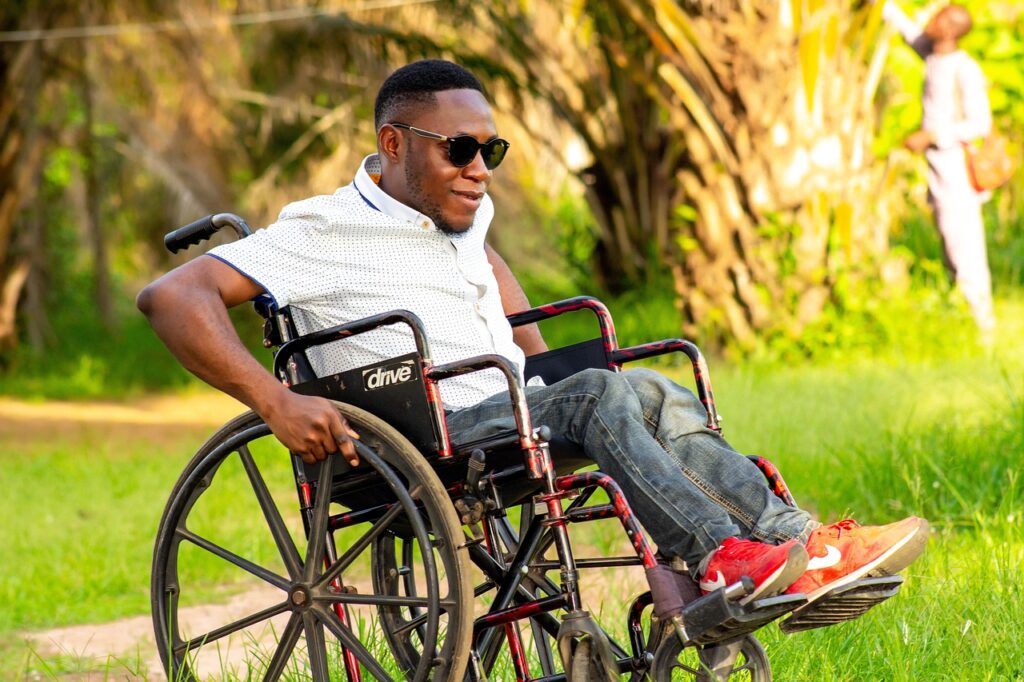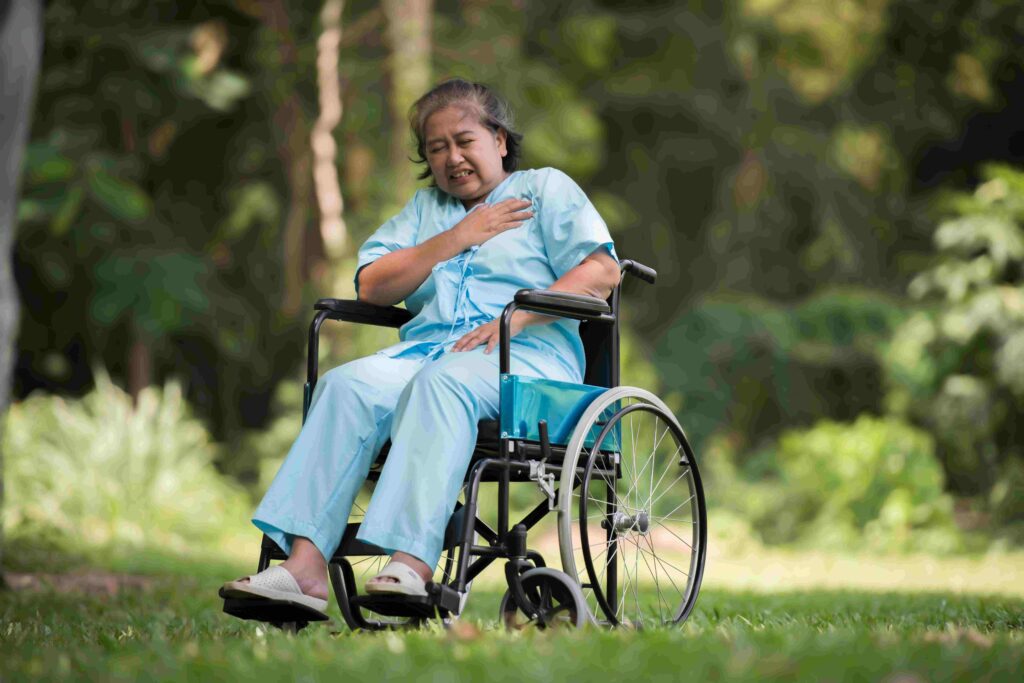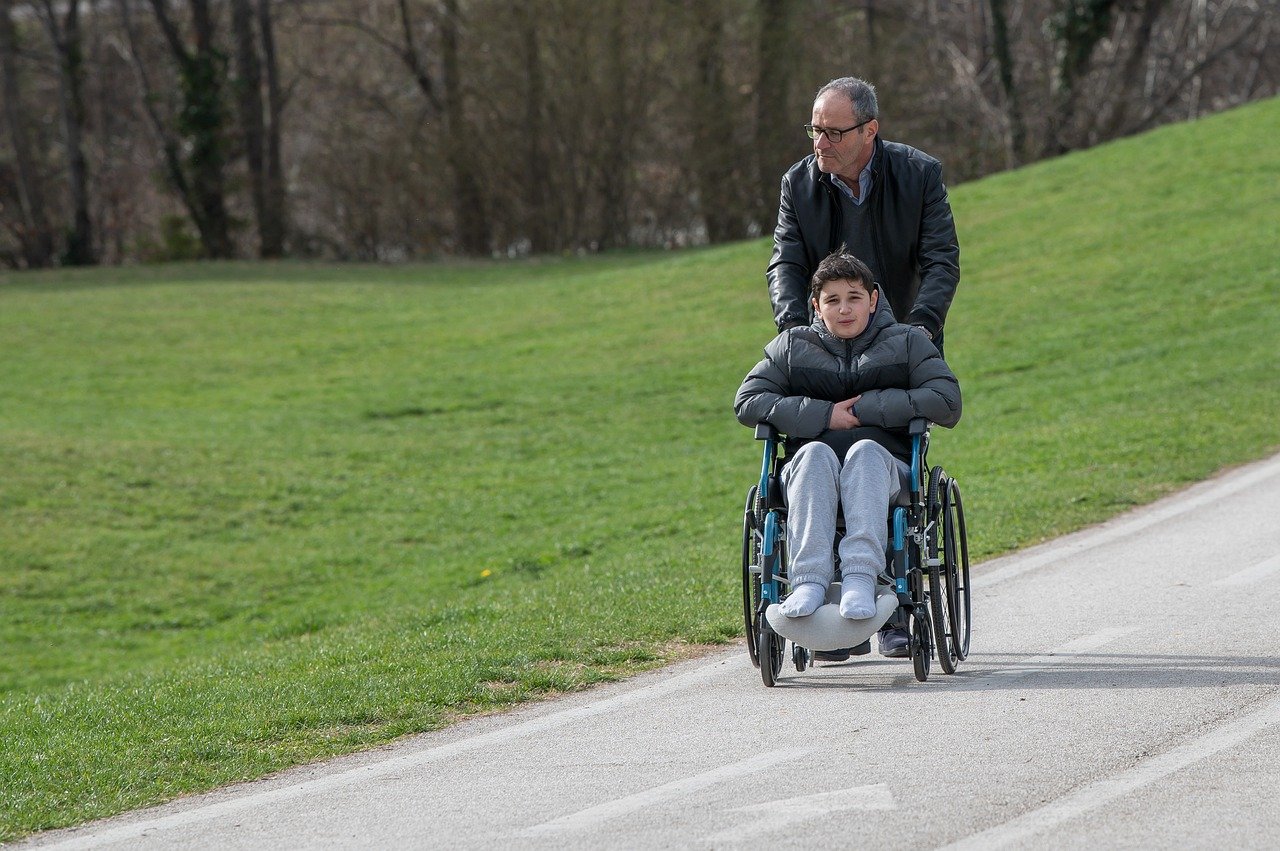Understanding Paralysis Symptoms
Understanding paralysis is crucial for grasping the profound impact it has on individuals’ lives. Paralysis, the loss of muscle function in part of the body, can be temporary or permanent, affecting various aspects of daily living and overall well-being. This condition can result from numerous causes, including spinal cord injuries, stroke, multiple sclerosis, cerebral palsy, and traumatic brain injuries. The effects of paralysis extend beyond physical limitations, often leading to emotional and psychological challenges as individuals navigate the complexities of their condition and seek ways to maintain their independence and quality of life.
Paralysis significantly impacts the nervous system and muscles, disrupting the communication pathways between the brain and the affected body parts. When the nervous system is damaged, signals from the brain can no longer reach the muscles, resulting in loss of movement and sensation. This disconnection can lead to muscle atrophy, where the muscles waste away due to inactivity.
Additionally, paralysis can cause secondary complications such as pressure sores, respiratory issues, and decreased circulation. Understanding these physiological effects is essential for developing effective treatment and rehabilitation strategies, which aim to enhance mobility, manage symptoms, and improve the overall quality of life for those living with paralysis.
Early Warning Signs of Paralysis Symptoms
Early warning signs of paralysis often include subtle changes in muscle strength, sensation, and coordination. Individuals may notice a gradual weakening or numbness in specific parts of their body, such as the hands, feet, or face. Other symptoms can include tingling sensations, muscle spasms, and difficulties with balance and coordination. Recognizing these early symptoms is crucial, as they can indicate the onset of conditions such as multiple sclerosis, stroke, or spinal cord injury.
Detailed attention to these signs allows for prompt medical intervention, which can significantly improve the prognosis and management of paralysis. The importance of early detection in managing paralysis cannot be overstated. Timely identification of symptoms allows for early medical intervention, potentially halting the progression of paralysis or even reversing its effects.
Case studies have shown that individuals who recognized the early signs and sought immediate medical care often experienced better outcomes. For instance, a man who noticed a gradual weakness in his left arm was diagnosed with a minor stroke and received treatment that prevented further damage. Similarly, a woman who experienced tingling and numbness in her legs was found to have a treatable spinal condition. These examples highlight the critical role of early detection and prompt treatment in managing paralysis and improving quality of life.
Types of Paralysis and Their Symptoms

Paralysis is a medical condition characterized by the loss of muscle function in part of the body, and it can manifest in various forms, each with distinct symptoms. The main types of paralysis include partial, complete, localized, and generalized paralysis. Partial paralysis, or paresis, involves some muscle function, whereas complete paralysis results in a total loss of muscle function. Localized paralysis affects a specific area, such as the face or a limb, while generalized paralysis impacts a larger portion or the entire body. Understanding these differences is crucial for proper diagnosis and treatment.
Each type of paralysis has specific symptoms that help in identifying its nature. Partial paralysis may present with muscle weakness, tingling, or numbness, while complete paralysis involves an absolute inability to move the affected muscles. Localized paralysis symptoms can include drooping of the face (as seen in Bell’s palsy) or the inability to move a limb (like in a stroke).
Generalized paralysis often results in widespread muscle weakness, loss of sensation, and potentially life-threatening complications if respiratory muscles are involved. Visual aids or infographics can be particularly useful in illustrating these differences, providing a clear and concise representation of the affected areas and symptoms associated with each type of paralysis.
Common Causes of Paralysis and Their Symptoms
Paralysis can arise from a variety of causes, each with its own set of symptoms. One of the most common causes is a stroke, which occurs when the blood supply to part of the brain is interrupted or reduced, depriving brain tissue of oxygen and nutrients. Symptoms of stroke-induced paralysis typically include sudden numbness or weakness in the face, arm, or leg, particularly on one side of the body. Another major cause is spinal cord injury, often resulting from trauma such as car accidents or falls.
This type of injury can lead to the loss of movement and sensation below the site of the injury, and its severity depends on the location and extent of the damage. Neurological disorders like multiple sclerosis or amyotrophic lateral sclerosis (ALS) can also lead to paralysis. These conditions cause progressive damage to the nervous system, resulting in symptoms like muscle weakness, coordination problems, and eventually, loss of voluntary movement.
Accurate medical diagnosis is crucial in identifying the specific cause of paralysis, as the treatment and management strategies can vary significantly depending on the underlying condition. For instance, a stroke requires immediate medical intervention to restore blood flow to the brain and minimize brain damage, while spinal cord injuries may necessitate surgical intervention, rehabilitation, and long-term physical therapy.
Neurological disorders often require a combination of medication, physical therapy, and lifestyle adjustments to manage symptoms and slow progression. Early and precise diagnosis not only improves the chances of effective treatment but also helps in preventing further complications, enhancing the overall quality of life for individuals affected by paralysis.
How to Recognize Sudden Paralysis Symptoms
Recognizing the signs and symptoms of sudden onset paralysis is crucial for timely intervention. Sudden paralysis can manifest as an inability to move certain parts of the body, loss of sensation, or sudden muscle weakness. Other symptoms may include difficulty speaking, facial drooping, severe headache, or confusion. These signs can be indicative of a stroke, spinal cord injury, or other neurological emergencies.
It’s essential to pay close attention to any sudden and unexplained changes in movement or sensation, as these can be life-threatening if not addressed immediately. If you or someone you know experiences sudden paralysis, it is imperative to take immediate action. First, call emergency services right away, as every minute counts in reducing the potential damage. While waiting for medical professionals to arrive, ensure the person is in a safe and comfortable position.

Avoid giving them any food or drink, as this could complicate their condition. Providing accurate information about the symptoms and their onset to the medical team can significantly aid in diagnosis and treatment. Seeking immediate medical attention is crucial because timely intervention can improve the chances of recovery and reduce the risk of long-term disability.
Paralysis Symptoms in Different Parts of the Body
Paralysis can manifest in various parts of the body, each presenting distinct symptoms depending on the affected area. When paralysis occurs in the arms, individuals might experience a loss of movement, weakness, or an inability to grasp objects, making daily tasks such as eating or writing challenging. In the legs, paralysis can result in difficulty walking, balancing, or even complete immobility, necessitating the use of wheelchairs or other mobility aids.
Facial paralysis, often seen in conditions like Bell’s palsy or after a stroke, can lead to drooping on one side of the face, impaired speech, and difficulty with facial expressions, significantly affecting communication and emotional expression. Paralysis in other body parts, such as the torso, can disrupt core strength and stability, impacting overall posture and the ability to perform routine activities.
The variation in symptoms is closely tied to the specific area of the nervous system that is damaged or affected. For example, a spinal cord injury at different levels can lead to quadriplegia, affecting all four limbs and the torso, or paraplegia, impacting the lower half of the body. Personal stories from individuals living with paralysis highlight these differences. John, who suffered a spinal cord injury resulting in paraplegia, speaks about the initial shock and gradual adaptation to using a wheelchair and finding new ways to stay active.
In contrast, Maria, who has facial paralysis due to a stroke, shares her journey of relearning speech and regaining facial movement through physical therapy. These testimonials underscore the unique challenges and resilience of those living with different types of paralysis, emphasizing the importance of tailored medical and rehabilitative support.
Living with Paralysis: Symptoms and Daily Challenges
Living with paralysis presents a myriad of daily challenges that significantly impact an individual’s quality of life. One of the most common difficulties is limited mobility, which can make routine activities such as getting out of bed, dressing, and moving around the house arduous. This lack of mobility often necessitates the use of assistive devices like wheelchairs or mobility scooters. Additionally, individuals with paralysis may experience chronic pain, muscle spasms, and complications related to bladder and bowel control.
These symptoms can lead to secondary issues like pressure sores and infections, further complicating daily living. Emotional and psychological challenges, such as feelings of frustration, dependency, and depression, are also prevalent and can hinder overall well-being. Managing these symptoms and overcoming daily challenges requires a multi-faceted approach. Regular physical therapy can help maintain muscle strength and flexibility, reducing the risk of spasms and improving mobility.
Occupational therapy can assist individuals in learning adaptive techniques to perform daily tasks more independently. Pain management strategies, including medications and alternative therapies like acupuncture, can alleviate chronic pain. For bladder and bowel control, a combination of medication, dietary adjustments, and scheduled voiding can be effective. Additionally, leveraging resources such as support groups, counseling, and assistive technology can provide emotional support and practical solutions, enhancing the overall quality of life for individuals living with paralysis.
Paralysis Symptoms and Mental Health
Experiencing paralysis symptoms can have a profound psychological impact on an individual, often leading to a range of emotional and mental health challenges. The sudden loss of mobility and independence can trigger feelings of helplessness, frustration, and grief. Individuals may grapple with a sense of identity loss and face increased anxiety and depression as they adjust to their new reality.
The drastic change in lifestyle can also lead to social isolation, as they might withdraw from activities they once enjoyed and struggle with the stigma associated with their condition. These emotional struggles can exacerbate the physical challenges, creating a cycle that further deteriorates mental health. To manage these psychological effects, individuals with paralysis symptoms can benefit from various coping strategies and support systems. Professional mental health support, such as therapy and counseling, can provide a safe space for expressing emotions and developing coping mechanisms.
Engaging in support groups with others facing similar challenges can foster a sense of community and understanding, reducing feelings of isolation. Additionally, involving family and friends in the rehabilitation process can offer emotional support and encouragement. Adaptive sports and recreational activities tailored for individuals with paralysis can also play a crucial role in boosting self-esteem and enhancing overall well-being. By leveraging these strategies, individuals can better navigate the emotional complexities of living with paralysis and improve their quality of life.
Advancements in Treating Paralysis Symptoms
Advancements in treating paralysis symptoms have made significant strides in recent years, blending cutting-edge medical techniques with innovative technological solutions. Breakthroughs such as stem cell therapy, nerve regeneration, and advanced prosthetics have shown promising results in restoring some level of mobility and function to those affected by paralysis. Techniques like epidural stimulation, which involves electrical stimulation of the spinal cord, have enabled patients to regain voluntary movement and even stand independently in some cases.
Moreover, brain-computer interfaces (BCIs) are making it possible for paralyzed individuals to control external devices using their thoughts, opening new avenues for independence and improved quality of life. These advancements hold immense potential for alleviating the symptoms of paralysis by addressing both the physical and psychological challenges faced by patients. Stem cell therapy, for example, aims to repair damaged spinal cord tissues, offering hope for long-term recovery.
The integration of exoskeletons and robotic limbs, controlled by BCIs, can enhance mobility and help patients perform daily activities with greater ease. Future prospects in paralysis treatment are equally promising, with ongoing research focusing on gene therapy, nanotechnology, and further refinements in neural prosthetics. As these technologies evolve, they are expected to provide even more effective solutions, potentially leading to breakthroughs that could restore full functionality to individuals affected by paralysis.
Support Systems for Those Experiencing Paralysis Symptoms
A strong support system is crucial for individuals experiencing paralysis symptoms, as it plays a vital role in both emotional and practical aspects of their lives. Family, friends, and caregivers provide the emotional strength needed to navigate daily challenges, while also assisting with day-to-day tasks and medical needs. This network of support helps individuals maintain a sense of normalcy and independence, which can be empowering and vital for their overall well-being.
The encouragement and understanding from loved ones can significantly boost mental health and foster resilience in the face of adversity. Finding support groups and communities is essential for those dealing with paralysis, as these resources offer invaluable connections with others who understand their experiences. Many organizations and online forums provide platforms where individuals can share their stories, exchange advice, and find encouragement.
Personal stories of triumph and resilience within these communities often highlight how support networks can transform lives, offering hope and practical strategies for managing symptoms. Engaging with these groups not only helps individuals feel less isolated but also provides a sense of belonging and strength through shared experiences and collective wisdom.
Exercises and Therapies for Managing Paralysis Symptoms
Physical therapies and exercises play a crucial role in managing and alleviating the symptoms of paralysis. Tailored physical therapy programs, such as range-of-motion exercises, strength training, and functional mobility training, are designed to enhance muscle function, improve circulation, and prevent muscle atrophy. Techniques like hydrotherapy use water resistance to facilitate movement and reduce strain on joints, while neuromuscular re-education helps retrain the nervous system to improve coordination and balance.
These therapies can be customized based on the individual’s level of paralysis and specific needs, contributing significantly to their overall quality of life. Success stories from individuals who have engaged in these therapies highlight their transformative impact. For instance, a patient with incomplete spinal cord injury reported significant improvements in mobility and muscle strength after a dedicated program of physical therapy and adaptive exercises.
Another individual with stroke-related paralysis saw remarkable progress in hand function and daily living activities following a combination of targeted exercises and occupational therapy. These accounts underscore the potential of physical therapies to not only manage but also reduce paralysis symptoms, providing hope and tangible benefits for many.
Paralysis Symptoms: When to See a Doctor
Paralysis, which can manifest as sudden weakness or loss of movement in part or all of the body, requires prompt medical attention to determine its underlying cause. If you experience symptoms such as sudden numbness or weakness in one side of the body, difficulty speaking or understanding speech, severe headache, or loss of vision, it’s crucial to seek immediate medical help.
These symptoms could indicate serious conditions such as stroke, neurological disorders, or other emergencies that necessitate swift intervention to prevent further complications or permanent damage. Preparing for a doctor’s visit involves documenting the onset and progression of your symptoms, including any associated factors such as recent injuries or illnesses.
Be ready to provide detailed information about your medical history and any medications you are currently taking. During the diagnosis, your doctor will likely perform a physical examination and may recommend imaging tests or neurological evaluations to pinpoint the cause of the paralysis. Early and accurate diagnosis is essential for effective treatment and recovery.
FAQ
What are common paralysis symptoms?
Common symptoms of paralysis include sudden loss of movement or weakness in an arm or leg, difficulty speaking, drooping of the face, and loss of sensation in certain body parts. These symptoms may vary depending on the type and extent of paralysis.
What causes paralysis symptoms?
Paralysis symptoms can be caused by a range of conditions including stroke, spinal cord injury, multiple sclerosis, and cerebral palsy. The underlying cause determines the specific symptoms and severity of paralysis.
When should I see a doctor for paralysis symptoms?
You should see a doctor immediately if you experience sudden or severe symptoms such as sudden weakness, loss of coordination, or numbness. Prompt medical evaluation is crucial for accurate diagnosis and treatment.
Can paralysis symptoms be treated?
Treatment for paralysis symptoms depends on the underlying cause and may include medication, physical therapy, and sometimes surgery. Early diagnosis and intervention are key to managing symptoms and improving quality of life.
Are there different types of paralysis symptoms?
Yes, paralysis symptoms can vary based on the type of paralysis. For example, partial paralysis may involve weakness in certain areas, while complete paralysis results in total loss of movement. Symptoms can also differ based on the affected body part.
How can I manage paralysis symptoms at home?
Managing paralysis symptoms at home may involve physical therapy exercises, using assistive devices, and making lifestyle adjustments. It’s important to follow your healthcare provider’s recommendations and engage in regular check-ups to monitor progress.
What should I do if paralysis symptoms worsen?
If your paralysis symptoms worsen, seek medical advice immediately. Your doctor may need to adjust your treatment plan or perform further tests to determine the cause and appropriate intervention.
Are there support resources available for paralysis symptoms?
Yes, there are various support resources available, including support groups, online communities, and rehabilitation services. These resources can provide valuable information, emotional support, and practical advice for managing paralysis symptoms.

